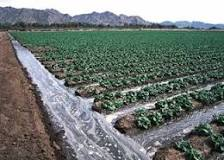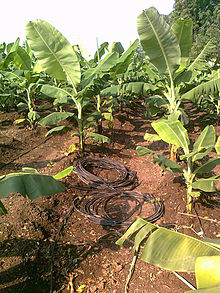
GOD'S PROMISE FOR THE YEAR 2015
GREAT REWARD
Genesis 15:1: After these things, the word of the LORD came unto Abram in a vision, saying; Fear not, Abram: I am thy shield, and thy exceeding great reward.
PEACE & HEALING
Isaiah 53:5: But he was wounded for our transgressions, he wasbruised for our iniquities: the chastisement of our peace was upon him; and with his stripes we are healed.
FAITHFULNESS & STABILISATION
2.Thessalonians 3:3: But the Lord is faithful, who shall establish you, and keep you from evil.
Priority & PROSPERITY
OUR LORD JESUS SAID:
But seek ye first the kingdom of God and His righteousness and all these things shall be added unto you. (Matthew 6:33)
For all web design & Development
contact info@calvarysoft.com
|
Water Management in Irrigation, Industry, Houses and Businesses By Prof. Dr. C. Peter Chandran, M.Tech.,(IITM), Ph.D.,(USA), Department of Civil Engineering, Dhanalakshmi College of Engineering. Manimangalam, Near Tambaram, Chennai 601301 Email: peterchandran@hotmail.com Phone: +91- 9445113726
Download Water Management Power Point Presentation Abstract: By reducing water loses to 15%, we can meet most of the world’s water needs. The United States of America is the world’s largest user of water. The main cause for water waste is that we charge too little for water. Higher water prices encourage water conservation. The second major cause of water waste is lack of Government subsidies for improving the efficiency of water use. The solutions are wasting less water in Irrigation, wasting less water in Industry, Homes, and Businesses; Using water more sustainably. Irrigation systems obtain water from (i) a ground water well or (ii) a surface water source ( lake, reservoir or rivers). 60% of the world’s irrigation water is currently wasted. But the good news is improved irrigation techniques can reduce this proportion to 5-20%. Drip irrigation is very efficient, with 90-95 % of the water input reaching the crops. The Nation of Israel has used many of these techniques. There are several ways to use water more effectively in industries, homes, and businesses: Use water meters and charge for all municipal water use, Raise water prices, purify and reuse water etc. The solution is using water more sustainably. Sustainable water use is based on an old proverb, “The frog does not drink up the pond in which it lives”. Some of the ways to implement this principle is: Preserving water Quality, Integrated water shed management, wasting less water, etc. What can you do! We can all help bring about this blue revolution, by using and wasting less water. Sustainable use of world’s water is the better way. Keywords: Water Management, water use, wasting less water, Drip irrigation, water meter, sustainable water, Israel, water quality. 1. INTRODUCTION: By reducing water losses to 15%, we can meet most of the world’s water needs. 65- 70% of the water people use throughout the world is lod\st through evaporation, leaks, and other losses. The United States of America is the world’s largest user of water. The main cause of for water waste is that we charge too little for water. Government subsidies provide irrigation water, electricity, and diesel for farmers. Users should invest in water- saving technologies. Water Resources experts believe that governments will have to make the unpopular design to raise water prices. Higher water prices encourage water conservation. In the country of Africa, each household receives a set of amount of water at a low price to meet basic needs, when users exceed this amount, the price rises. The second major cause of water waste is lack of Government subsidies for improving the efficiency of water use. A basic rule of economics is that you get more of what you reward. Solutions:
2. WASTING LESS WATER IN IRRIGATION: 60% of the irrigation water is currently wasted. But the good news is improved irrigation techniques can reduce this proportion to 5-20% . In general, about 60% of the world’s irrigation water does not reach the targeted crops and does not contribute to food production. Irrigation systems obtain water from (i) a ground well or (ii) a surface water source ( lake, reservoir or rivers). The Flood Irrigation: The water flows by gravity through unlined ditches in crop fields. Then the crops can absorb the irrigation water. This is called flood irrigation method. It delivers far more water than is needed for crop growth and typically loses 40% of the water through evaporation, seepage and runoff ( Refer Fig. 1.a.).
Fig.1.a. Flood Irrigation: Flood irrigation is an ancient method of irrigating crops. It was likely the first form of irrigation used by humans as they began cultivating crops and is still one of the most commonly used methods of irrigation used today. The centre- pivot low pressure sprinkler: More efficient and environmentally sound irrigation technologies can greatly reduce water demands and waste on farms by delivering water more preciously to crops.
Fig.1.b. Sprinkler Irrigation: Sprinkler irrigation is a method of applying irrigation water which is similar to natural rainfall. Water is distributed through a system of pipes usually by pumping. It is then sprayed into the air through sprinklers so that it breaks up into small water drops which fall to the ground. Firstly, for example, the centre- pivot low pressure sprinkler (Fig.1.b. ) uses pumps to spray water on a crop. It typically allows 80% of the water to reach crops. Secondly, Low- energy precision application(LEPA) sprinklers, another form of centre pivot irrigation, put 90-95% of the water where crops need it by spraying the water closer to the ground and in larger droplets. Another method is to use soil moisture detectors to water crops only when they need it. Drip irrigation or Micro-irrigation: It is the most efficient way to deliver small amount of water precisely to crops. It consists of a network of a perforated plastic tubing installed at or below the ground level. Small holes or emitters in the tubing deliver drops of water at a slow and steady rate, close to the plant roots. Drip irrigation is very efficient, with 90-95% of the water input reaching the crops. The flexible and light weight tubing system can easily be fitted to match the patterns of crops in a field and left in place or moved around.
Fig.1.c.. Drip Irrigation system: Drip irrigation is a form of irrigation that saves water and fertilizer by allowing water to drip slowly to the roots of many different plants, either onto the soil surface or directly onto the root zone, through a network of valves, pipes, tubing, and emitters. Unfortunately, the capital cost of conventional drip irrigation systems remains too high for most poor farmers and for use on low- value row crops. Irrigation water is underpriced. If we raise water price enough, then Drip irrigation would be quickly adopted to irrigate most of the world’s crops. Good News: The Capital cost of a new type of Drip Irrigation system is one-tenth as much per hectare as that for conventional drip systems. Preventive Methods for reducing water waste in Irrigation
Figure 4. Solutions: Prevention Methods for reducing water waste in Irrigation 3. SUSTAINABLE IRRIGATED AGRICULTURE IN ISRAEL The technique was developed in Israel in the 1960s and is now used by half of its farmers. It has a number of advantages:
Drip irrigation is economically feasible for high-profit fruit, vegetable, and orchard crops and for home gardens. Drip irrigation systems could bring about a revolution in more sustainable irrigated agriculture that would increase food yields, reduce water use and waste, and lessen some of the environmental problems associated with agriculture.
4. WASTING LESS WATER IN INDUSTRY,HOUSES, AND BUSINESSES Figure 5. lists ways to use water more efficiently in industries, homes, and businesses. Many house owners and businesses in water-short areas are replacing green lawns in arid and semiarid regions with vegetation adopted to a dry climate. This form of landscaping, called xeriscaping, reduces water use by 30-85% and sharply reduces inputs of labour, fertilizer, and fuel. It reduces polluted runoff, air pollution, and yard wastes. Introducing water meters reduced water use by more than one-third.US Public water systems charge less for unlimited use of high quality water. Many apartment dwellers water use is included in their rent. Laws are required for water conservation. You can reduce your personal water use and waste. Methods of reducing water waste in industries, homes, and businesses:
Figure 5. Solutions : Methods of Reducing water waste 5. CONCLUSION: By reducing water losses to 15%, we can meet most of the world’s water needs. The main cause for water waste is that we charge too little for water. The solution are wasting less water in irrigation, wasting less water in Industry, Houses and Businesses; Using water more sustainably. Some of the ways to implement sustainable use of water is: Preserving water quality, Integrated water shed management, wasting less water, etc. We can all bring about this blue revolution, by using and wasting less water. Sustainable use of world’s water is the better way. 5. References:
Rev. C. Peter Chandran
|
Copyright (c) 2005 Calvarysoft Inc. All rights reserved.















